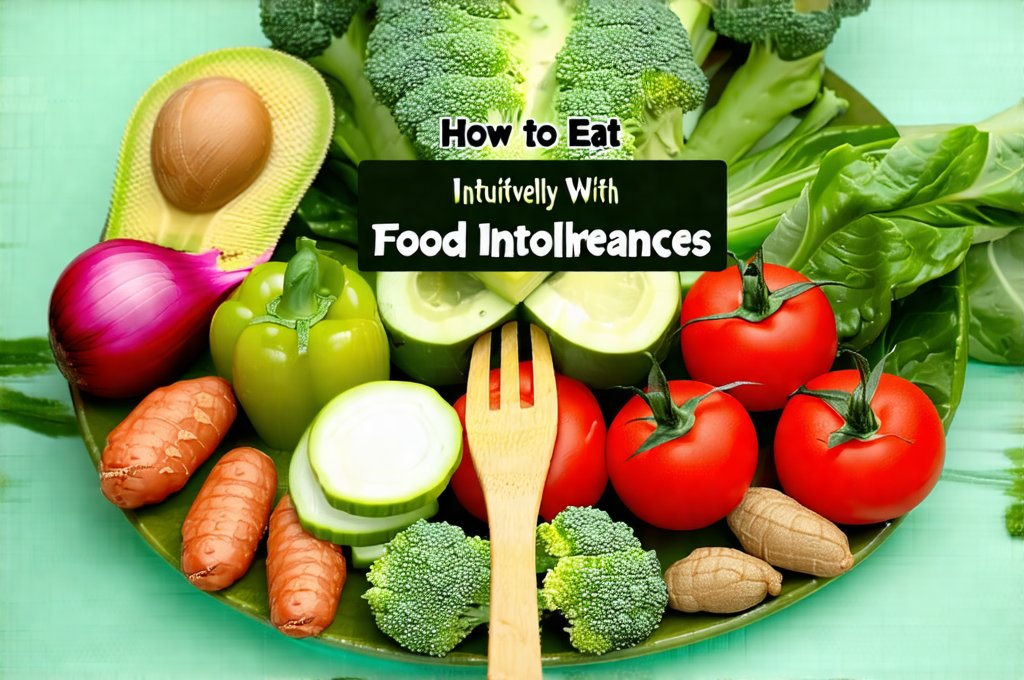Intuitive eating has gained significant traction as a refreshing alternative to restrictive dieting, promoting a healthy relationship with food centered around internal cues of hunger and fullness. It’s about trusting your body’s wisdom and rejecting diet culture’s often unrealistic and damaging expectations. However, when you also navigate the complexities of food intolerances – sensitivities that can cause discomfort or even illness when certain foods are consumed – applying intuitive eating principles can feel…complicated. The fear of symptoms overshadows bodily cues, making it difficult to discern true hunger from anxiety about a potential reaction. This creates a challenging paradox: how do you listen to your body when listening to your body might mean experiencing unpleasant physical consequences?
This is where nuanced understanding and thoughtful adaptation become crucial. Intuitive eating isn’t simply about eating whatever you want without regard for how it makes you feel; it’s about honoring your body, which includes acknowledging its limitations and needs. For those with food intolerances, this means integrating awareness of those sensitivities into the intuitive eating process, not abandoning the principles altogether. It requires a shift in perspective, moving away from rigid avoidance and towards mindful experimentation, self-compassion, and a deep understanding of your unique body. It’s about finding a balance between trusting internal signals and respecting physiological responses – a dance that requires patience, self-awareness, and often, the support of qualified professionals. If you struggle with this, consider exploring resources on how to balance nutrition alongside your sensitivities.
Understanding the Intersection
The core principles of intuitive eating are built upon ten tenets, as originally defined by Evelyn Tribole and Elyse Resch. These include rejecting the diet mentality, honoring your hunger, making peace with food, challenging the food police (internalized rules about “good” and “bad” foods), discovering satisfaction factors, feeling fullness, coping with emotions without using food, respecting your body, movement – finding what feels good, and honoring your health with gentle nutrition. When you have a food intolerance, some of these tenets need careful consideration. For instance, ‘making peace with food’ doesn’t mean recklessly consuming foods that demonstrably make you ill; it means releasing guilt around all food while simultaneously acknowledging which foods require mindful management for your wellbeing. Learning how to navigate menus is also a useful skill.
The key difference between a restrictive diet driven by fear and an intuitive approach informed by intolerance is the mindset. A diet focuses on what you can’t have, leading to deprivation and often, rebound eating. Intuitive eating with intolerances acknowledges what might cause discomfort but doesn’t frame it as a moral failing or restriction. Instead, it encourages exploration: What happens when I try a small amount? How can I modify this food to make it more tolerable? What are my options if this simply isn’t going to work for me? It’s about moving from fear-based avoidance to informed choice and self-compassionate acceptance. Perhaps learning how to cook for someone with intolerances can give you more control over ingredients too.
It’s also important to differentiate between an intolerance and a true allergy. Allergies involve the immune system and can be life-threatening, requiring strict elimination of the allergen. Intolerances are generally digestive in nature and cause discomfort but aren’t typically life-threatening. This distinction impacts how you approach reintroduction and mindful experimentation – allergies demand absolute avoidance, while intolerances may allow for small amounts or modified preparations. Understanding your specific condition is paramount.
Reintroducing Foods Mindfully
Reintroduction isn’t about “curing” a food intolerance; it’s about gathering information. It’s an investigative process designed to determine the extent of your sensitivity and identify potential trigger foods with greater clarity. This should always be done under the guidance of a registered dietitian or healthcare professional, especially if you have multiple intolerances or a complex medical history. Here’s how it can work:
- Establish a Baseline: Begin by eliminating suspected trigger foods for a period (often several weeks) to allow your gut to calm down and symptoms to subside. This isn’t about long-term restriction, but about creating clarity for reintroduction.
- Introduce One Food at a Time: Choose one food to reintroduce, starting with a very small amount. Observe how your body responds over 2-3 days before introducing another food. Keep a detailed journal documenting what you ate, when, and any symptoms experienced (bloating, gas, diarrhea, skin rashes, etc.).
- Gradually Increase Quantity: If no symptoms arise from the initial small portion, gradually increase the amount of the food over several days, continuing to monitor for reactions.
- Consider Preparation Methods: How a food is prepared can significantly impact tolerance. For example, fermented dairy may be more tolerable than fresh milk for someone with lactose intolerance.
-
Don’t Force It: If you experience significant discomfort, stop the reintroduction and don’t feel guilty about it. Some foods simply won’t work for your body, and that’s okay.
-
Be patient; this process takes time and self-awareness.
- Focus on one food at a time to isolate potential triggers accurately.
- Remember that tolerance levels can change over time, so reintroduction might need to be revisited periodically. Thinking about how to balance macros during this process can also be helpful.
Decoding Your Body’s Signals
With food intolerances, distinguishing between true hunger cues and anxiety about potential reactions can be incredibly challenging. Anxiety can masquerade as physical symptoms, creating a feedback loop of fear and avoidance. Learning to differentiate is crucial for intuitive eating success. Start by recognizing the difference between emotional hunger and physical hunger. Emotional hunger often comes on suddenly, craves specific foods (usually comfort foods), and feels urgent. Physical hunger develops gradually, isn’t fixated on particular foods, and can be satisfied with a variety of options.
Pay attention to how your body responds during and after eating. Instead of immediately focusing on potential negative reactions, notice what it feels like to genuinely enjoy food without fear. Is there a sense of satisfaction? Do you feel nourished and energized? If discomfort does arise, be specific about the symptom: is it digestive distress, skin irritation, or something else? This level of detail helps you pinpoint triggers more accurately and refine your understanding of your body’s responses.
Mindful eating practices are incredibly helpful here. Slow down while you eat, savor each bite, and pay attention to the texture, taste, and aroma of your food. Put your fork down between bites. Ask yourself: Am I still hungry? What am I truly craving right now? This slows down the process, allowing you to become more attuned to internal signals and less reactive to anxiety.
Navigating Social Situations & Restrictions
Social events often present unique challenges for those with food intolerances trying to practice intuitive eating. The pressure to conform, the abundance of tempting (but potentially problematic) foods, and the fear of being a burden can all contribute to stress and anxiety. The key is to approach these situations with self-compassion and proactive planning.
Don’t be afraid to communicate your needs clearly and respectfully. Most hosts are happy to accommodate dietary restrictions if they know in advance. Consider offering to bring a dish you can enjoy, ensuring there’s at least one safe option for yourself. If you’re unsure about ingredients, don’t hesitate to ask. It is not selfish to prioritize your wellbeing. Learning how to eat safely when food options are limited can ease anxiety in these situations.
However, avoid fixating on restrictions or feeling deprived. Focus on what you can eat and enjoy the social aspect of the event. If a small amount of a potentially triggering food doesn’t cause significant discomfort, consider allowing yourself that indulgence – it’s about finding balance, not rigid adherence to rules. Remember that intuitive eating is about honoring your health and enjoying life, and those two things aren’t mutually exclusive. If you do experience some discomfort, don’t beat yourself up about it. Treat it as a learning opportunity and move on. You might also find resources for how to eat out safely helpful when planning social gatherings. Furthermore, if you have children with food sensitivities, consider exploring ways to build gut resilience.


















